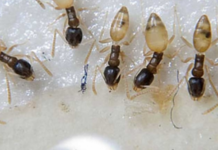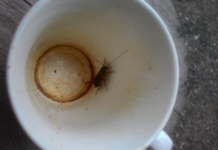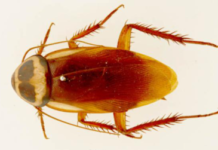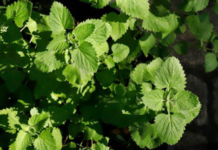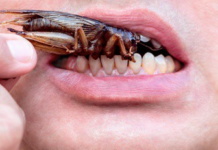You’ve probably encountered thatch ants but you didn’t know what they are. But if you do, do you know to get rid of thatching ants, fast and with natural methods? This post covers in detail what thatching ants are and how to kill them with step by step instructions.
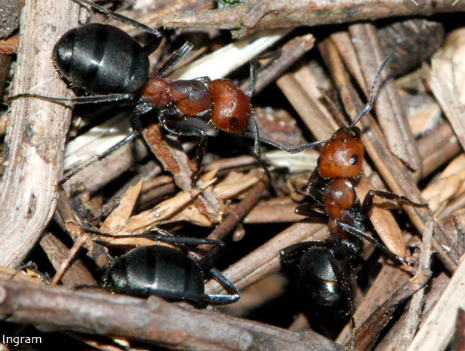
How do I get rid of thatching ants? There are a number of effective methods to get rid of thatch ants. Using ant baits is one of the best control method but it can take a few days for it to work. Other methods may include use of different liquid or powder pesticides. You may also apply natural methods to help eradicate thatching ants such as use of natural repellents.
The presence of thatch ants and their mounds can be a nuisance. They mounds can visually disrupt the landscape. Thatch ants are annoying when they invade your home. Their bite is fairly hard causing a painful sensation. If not treated, the bite on the skin can develop to blisters.
What are Thatching Ants?
Thatching ants also known as Formica obscuripes are large ant species with a body size ranging from 0.157 to 0.3149 inches which translates to about 4 – 8 mm in length. This size is large enough to build mounds or what is commonly referred to as thatched nests. The wester hatching ants are native to North America. They have the ability to build their nest pretty big. Their average colony size can consist up to 40000 worker ants.
Thatching ants are commonly known as mound ants as they are known for building mounds which consists of yard debris such as sticks, stems, pine needles and more. These mounds can make the landscape quite invisible. Thatch ants can cause eye soreness for homeowners dealing an infestation.
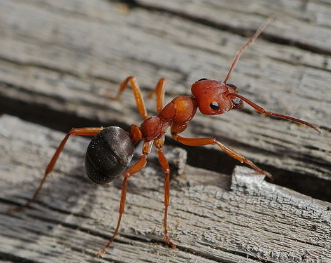
Although thatching ants have a positive impact on the ecosystem, they help in elimination harmful insects, the ant infestation into homes can cause problems. They are known to be aggressive and can cause a painful bite. The bite can develop blisters to humans and household pets. Once they bite, they spray the bitten area with formic acid. In plants, they also destroy the buds of fruits and destroy tree seedlings as well.
What Do Thatching Ants Eat?
Like many ant species, thatching ants eat sugary substances. This is why they invade home to search for sugary foods. Besides, they feed on various insects such as dead moths, small beetles and caterpillars.
The Differences between Thatching Ants & Carpenter Ants
Before knowing how to get rid of thatching ants, it is important to understand the differences between thatching ants and carpenter ants. Most people tend to confuse the two. While they can appear similar in all aspects, there are some ways to differentiate the two. The easiest way to tell this is to look at them from their sides. You have to focus your attention on the appearance of the top part of the thorax.
For instance, carpenter ants have a smooth and rounded thorax while thatch ants have a thorax with a dip or notch.
How to Get Rid of Thatch Ants – Methods & Instructions
Here is how you can get rid of thatch ants with methods and instructions. The steps by steps instructions should help you get rid of thatching infestation at home.
Step 1: Find and Destroy Thatch Ants’ Nests
One of the simple and easiest to get rid of thatching ants, is to first locate the ants’ nest. Finding the nest can prove to be difficult if only these insects are seen around your house. If you know their likely hideouts then this can ease this process. Thatching ants usually form their nests in decayed logs. Besides, the ants can create mounds from grass, stems, small sticks, pines etc.
Once you identify the nest, it is therefore recommended to destroy it completely. Note, the thatch ants are beneficial to the environment, therefore to destroy their nests it is advisable to use pesticides to kill the insects to stop them from migrating.
2. Apply Pesticides
When thinking of pesticides, use this ants baits and among others.
Ant Baits
Ant baits are considered to be the best way to get rid of thatching ants. Ant baits that contain boric acid are effective when dealing with these thatch ants. To effectively get rid of thatch ants, you need to ensure that you have repeatedly applied baits. Any time you spot a thatch ant, it means that they could be more near your house. They are probably searching for food that they will eventually take back to the colony.
Note that the tastes of thatching ants keep on changing throughout the year. Again, most thatch ants prefer sweet foods during summer and protein during the spring season. This information helps to set out the types of baits to place which will attract the ants.
Other Pesticides such as Boric acid
Thatch nests can also be removed using other pesticides such as boric acid, pyrethrin and others. Apply the pesticides in crevices, nests and cracks that can be entry points. When you spray, use multiple chemicals to kill the thatching ants quickly and also stop them from relocating.
It is noted majority of people prefer organic options while others use strong pesticides. Either of these pesticides is fine as long as it if effective. When spraying, make sure you saturate the mound not just the top but the entire mound.
Spot Method treatment
The other available but effective method to get rid of thatching ants’ nest. If you opt for this method, this should be done using a residual insecticide that is labelled for controlling ants. You don’t have to spray residual insecticides on large surface. Focus on the entry spots of the nests.
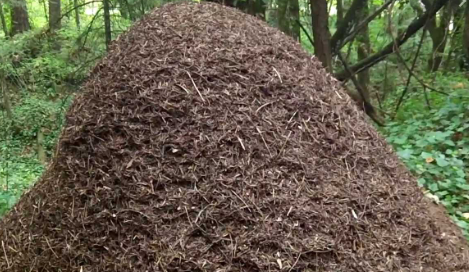
Step 3: Trim Backyard Trees Quite Often
Trimming branches is another sure way to get rid of the thatch ants. Tree next to your house could be another place where the ants can be found. Fruits trees such as figs and pears not only offer shade but also provide food for the ants.
Step 4: Crevices and Cracks
Understand that thatch ants are industrious in finding entry points such as crevices and cracks around the walls, windows and door. First, identify all these access points then block the routes with silicone- based caulk or any other type of caulk.
All or most types of insects like to make trails along wires, kitchen pipes and other structural elements, which act as entry points to your homes. You should examine locations where pipes or electric wires or any other element they use to enter your house and caulk these identified areas.
Step 5: Remove Ant Trails
Ants and specifically thatch ants leave a scented trail that helps other ants from their colony to find your house. Start by getting rid of these trails in order to eliminate these pests successfully. You can mix vinegar with water and spray around your house to get rid of thatching ants. You can use insecticides or any other mentioned method to eliminate the thatch ants.
Conclusions
If any of the methods doesn’t work, you should involve a professional exterminator. It can be expensive hiring an experienced exterminator.it is the highly effective method but also increases safety throughout the treatment process.
At times, thatch ants can be hard to get rid of. When done using any of these methods, monitor your house and the surrounding. This can help to see if there are any signs of them regrouping and rebuilding their colony.
Well, after applying the pesticides or whatever method you opt for, it is advisable to monitor the mounds for the next 3 to 5 days. This is to make sure the queen didn’t survive otherwise, they might rebuild and from a new colony in another place near your home. So always be on the lookout and treat them accordingly.
Hope this article was helpful!

